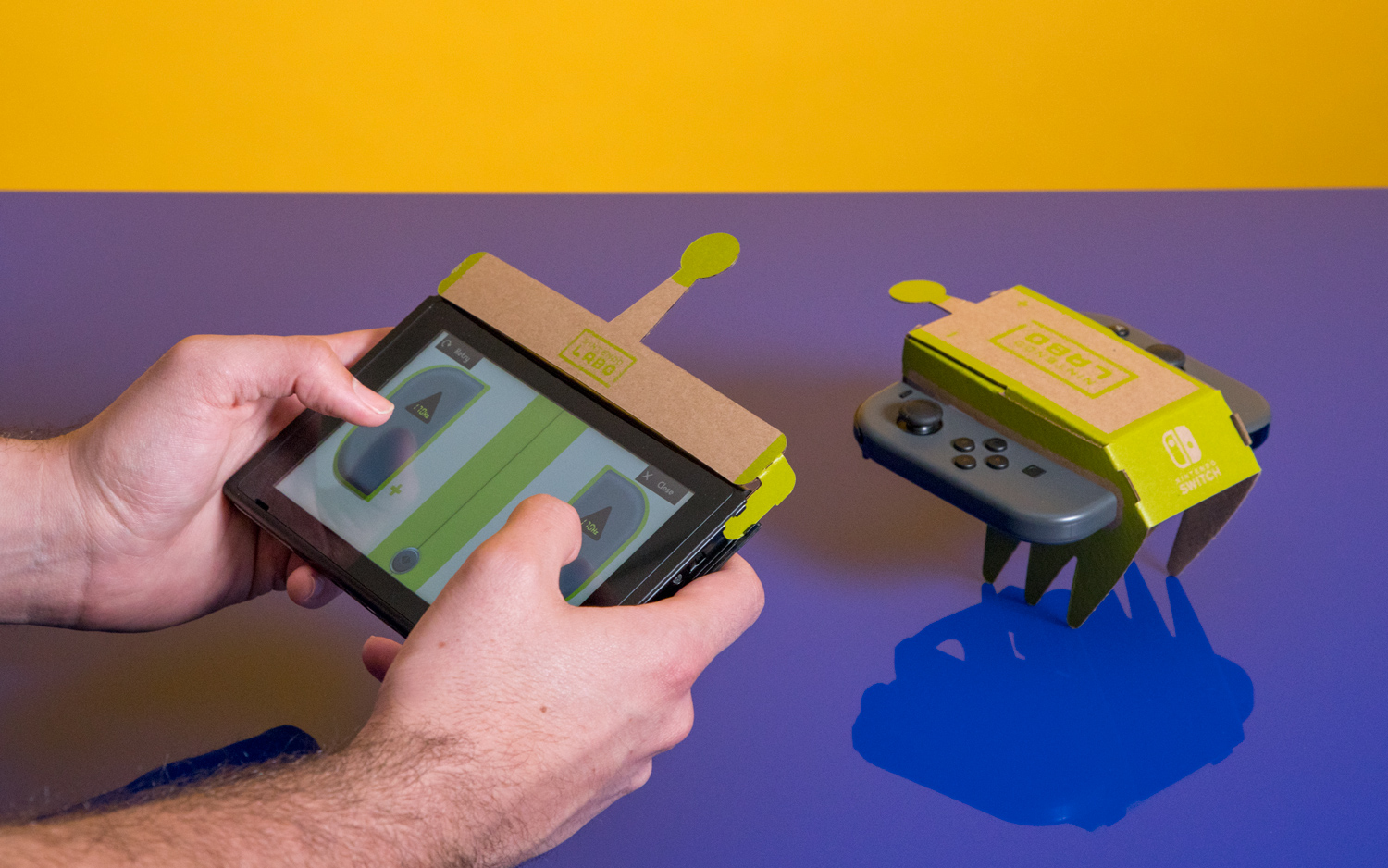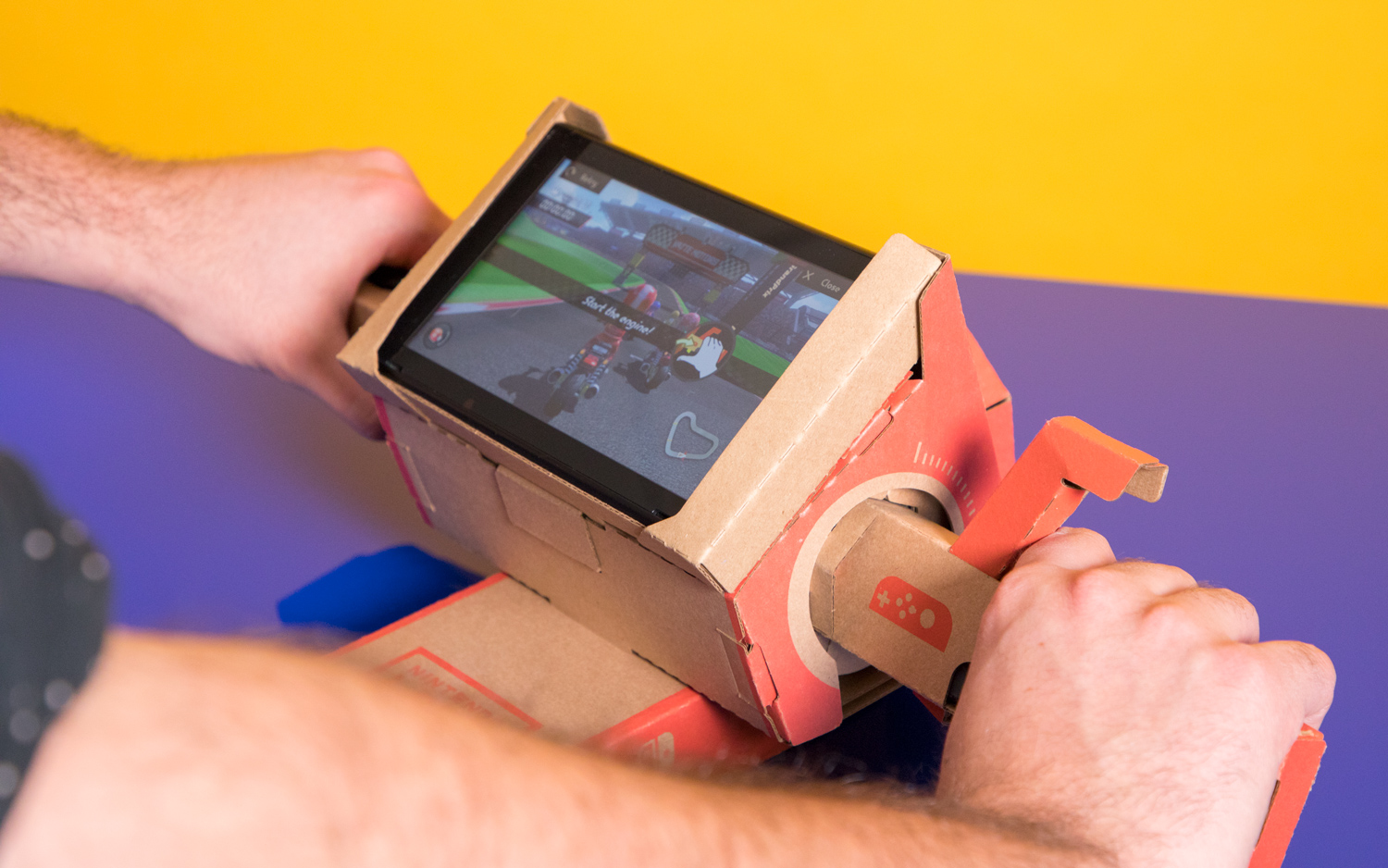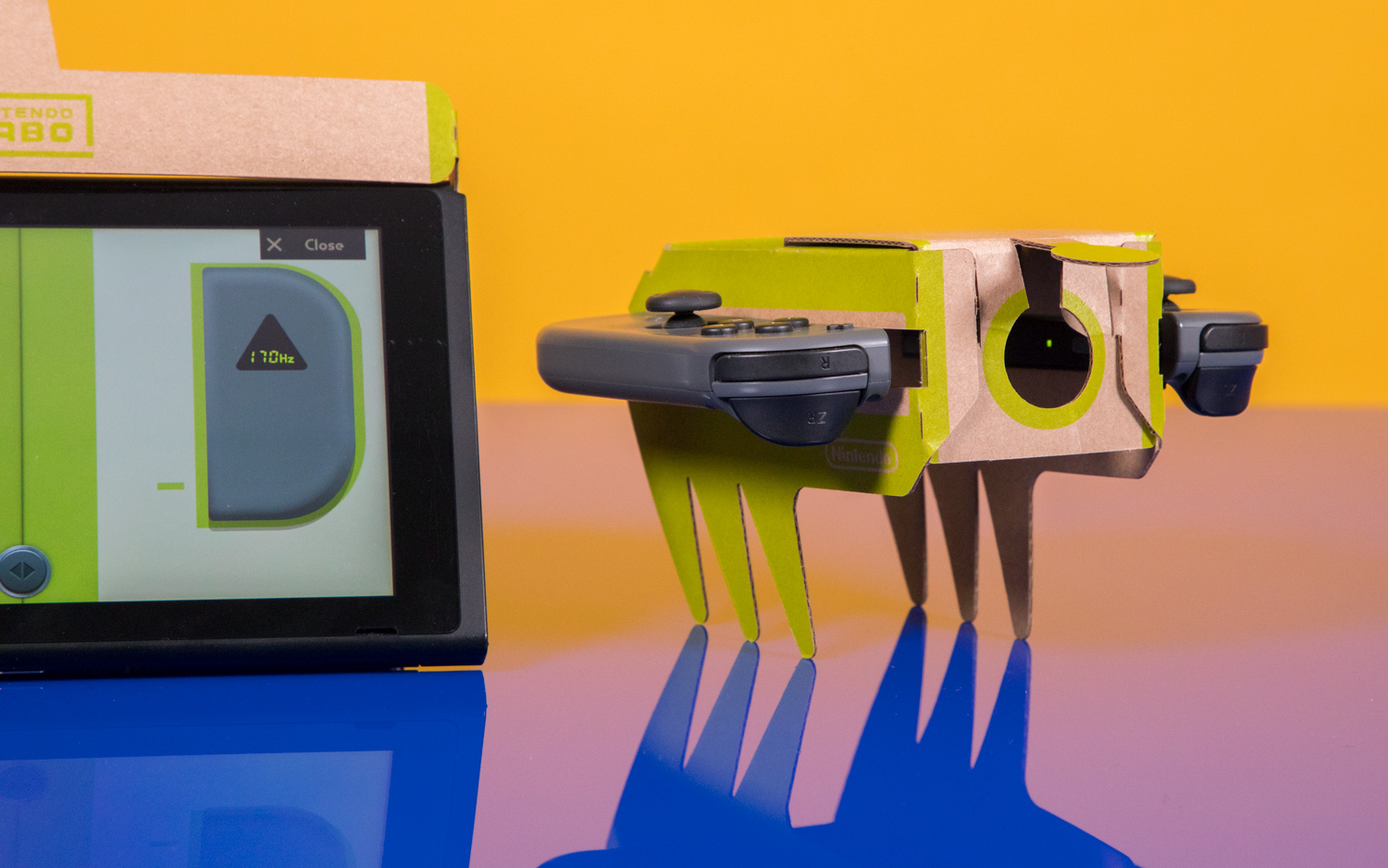What Nintendo Labo Tells Us About Switch's Future
The Nintendo Labo spotlights some of the Switch's most underrated features — and provides an exciting glimpse of what's to come.
I've been playing with Nintendo Labo for two days now, and it's been an absolute blast.

Nintendo's DIY cardboard toy kits are easy and fun to build, and interact with the Switch in delightful and surprising ways, whether you're using Joy-Cons to power an RC car or turning your entire Switch into an interactive motorbike.
But Labo is more than just a neat new way for kids to enjoy the Switch — it's also an exciting glimpse at the console's future.
For starters, Labo is the first Switch "game" I've played that actually uses the system's touchscreen and HD rumble functionality in meaningful ways. For example, when you're controlling the RC car you can build with Labo, you're using the Switch as a fully standalone tablet with no controllers attached, relying entirely on touch controls to buzz your cardboard car around the room.
Aside from a handful of titles, such as rhythm game Voez, few games have demonstrated the Switch's ability to function well using solely touch controls. But now that Nintendo is on board, it might only be a matter of time before we're getting a flood of new Switch games that don't require us to grab our Joy-Cons at all.
And then there's HD rumble, an oddly-named feature that essentially allows the Switch's Joy-Cons to deliver more detailed, nuanced vibrations than what you'd feel on a typical gamepad. Some games already make nice use of it — party game 1-2 Switch can make you believe that there are a set of bouncing balls inside of your Joy-Con, while challenging puzzler Tumbleseed uses the feature to simulate the feel of a seed rolling around in your hands.

But I didn't really get HD rumble until Nintendo Labo came around. After I built a cardboard motorbike, stuck a Joy-Con inside of it, and twisted the handle, I actually felt like an engine was revving in my hands. Fortunately, it seems like some third-party developers are having a similar awakening.
For example, in Behance Games' upcoming puzzler Lumines Remastered, you'll have the option to place an extra set of Joy-Cons near your legs to in order to feel the pulse of the game's music throughout your body. It's a bit of a wild gimmick — and requires you to own multiple pairs of Joy-Cons — but it's a great example of developers learning to leverage the Switch's hardware to deliver experiences you simply can't get anywhere else.
After I built a cardboard motorbike, stuck a Joy-Con inside of it, and twisted the handle, I actually felt like an engine was revving in my hands.
Oh, and did you know that your Joy-Con packs a hidden thermal camera? Neither did I, until I used my Labo RC car to see in the dark and track heat signatures. The potential for new kinds of augmented-reality Switch games is huge there.

The Nintendo Switch is already popular for two very good reasons: it has a ton of great games, and you can play them all either on your TV or on the go. But it's easy to forget about the smaller innovations tucked inside of Nintendo's tiny console, and Nintendo Labo is an excellent reminder of just how much the system can do — and how much further it might go in the future.
Sign up to get the BEST of Tom's Guide direct to your inbox.
Get instant access to breaking news, the hottest reviews, great deals and helpful tips.
Mike Andronico is Senior Writer at CNNUnderscored. He was formerly Managing Editor at Tom's Guide, where he wrote extensively on gaming, as well as running the show on the news front. When not at work, you can usually catch him playing Street Fighter, devouring Twitch streams and trying to convince people that Hawkeye is the best Avenger.

